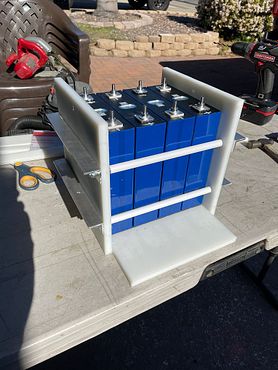RobertGreen
Solar Enthusiast
- Joined
- Mar 15, 2021
- Messages
- 308
We haven't exactly gotten complete and detailed information from the manufacturers regarding compression...How stupid would you feel to ignore the guidelines given by the producers, who do that "extra mile" themselves when constructing their own packs?
.............
You really believe Andy has more knowledge then the engineers over at BYD or EVE??
.............
Follow Andy's logic, or the factory engineering team.
AFAIK, the idea of compressing these cells with a certain force had to do with people in the DIY community becoming aware of a few lines mentioned in some of the lifepo4 cell data sheets which described the life cycle testing conditions.
These conditions are very specific and are very different from the type of service that would be expected in a solar storage application.
It does not make sense to simply extrapolate that 300KGf must be the ideal or required factor to gain long life in the use of these cells for our applications, and as far as I am aware(AFAIK in the english language), there hasn't been any specific guidance on that point from EVE, BYD, or similar manufacturers.
Is there some guidance that a factory engineering team has published about what the best way is to constrain or fixture these cells for long term use in solar storage applications? What published "instructions" about these cells are available from the manufacturers?




